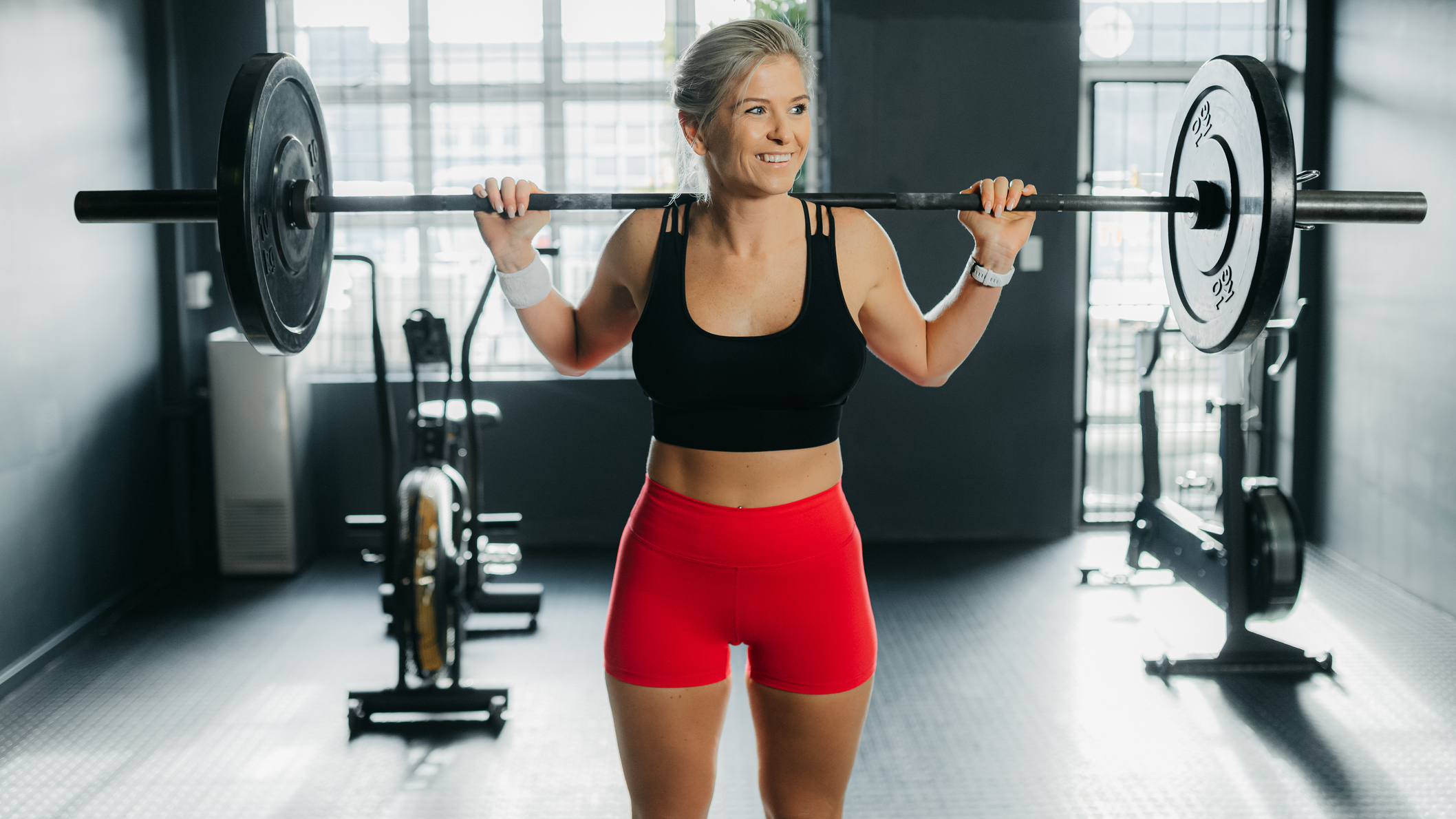You Don’t Always Need To Lift Heavy Weights—Here’s Why This PT Chooses To Lift Lighter
This session from Hannah Ashby is a great way to ensure your training is well-rounded

If you’re going to the gym to get strong you need to lift weights that are heavy enough to challenge your muscles. However, you don’t need to lift as heavy as you possibly can in every session to benefit from your time in the weights room.
This lower-body workout from personal trainer Hannah Ashby caught our attention because it prescribes lighter weights than you would normally use to prioritize range of motion. As we found out when we asked her to explain more, that doesn’t mean it’s any less challenging. “Keeping the weight down means that you can keep the volume high, take less rest to keep the intensity high and get extra depth, all of which add intensity to your workout without loading the weight,” says Ashby.
High-volume strength workouts are a great way to build muscular endurance and often contain a conditioning element to improve your cardiovascular health.
As Ashby says, lifting lighter than usual also gives you an opportunity to focus on your form and increase your range of movement, squatting deeper than normal, for example, to challenge your muscles in new ways.
“It’s a good way to switch up your workouts if you’re lifting heavy often. Or if you haven’t lifted heavy in a while and you’re looking to ease yourself back in, these workouts are a good way to do that,” says Ashby.
Tempo is also important in this workout. Move slowly throughout each of the lifts to increase the time under tension, which boosts muscle growth. A couple of the moves also involve isometric holds and pulses to develop your strength and control.
“Before you start this workout, make sure you take some time to do mobility work,” says Ashby. Our warm-up routine is a good place to start, then you can move on to these mobility exercises for your hips and these glute activation exercises.
Sign up for workout ideas, training advice, reviews of the latest gear and more.
This workout starts with barbell back squats, which Ashby recommends you do at 50% of your one rep max. This is followed by two supersets. The final exercise is hip thrusts, which you can also keep the weight fairly light for, as the rep range is moderate.
Watch Ashby's Instagram reel below where she demonstrates each of the exercises and keep scrolling for suggested sets and reps provided by Ashby. Click the exercise name to read our in-depth exercise guides.
A post shared by Hannah Ashby Fitness (@hannahashby_fit)
A photo posted by on
- 1 Barbell back squat 5 x 10
- 2A Romanian deadlift 5 x 10
- 2B Overhead reverse lunge 5 x 8 each side
- 3A Bulgarian split squat 4 x 10
- 3B Heel-elevated glute bridge with resistance band 4 x 15 (10sec isometric hold on final two reps)
- 4 Hip thrust 5 x 10 (5sec pulse followed by 5sec hold on final rep)

Alice Porter is a journalist who covers health, fitness and wellbeing, among other topics, for titles including Stylist, Fit & Well, Glamour, Cosmopolitan, Grazia, VICE and Refinery29. When she’s not writing about these topics, you can probably find her at her local CrossFit box.
